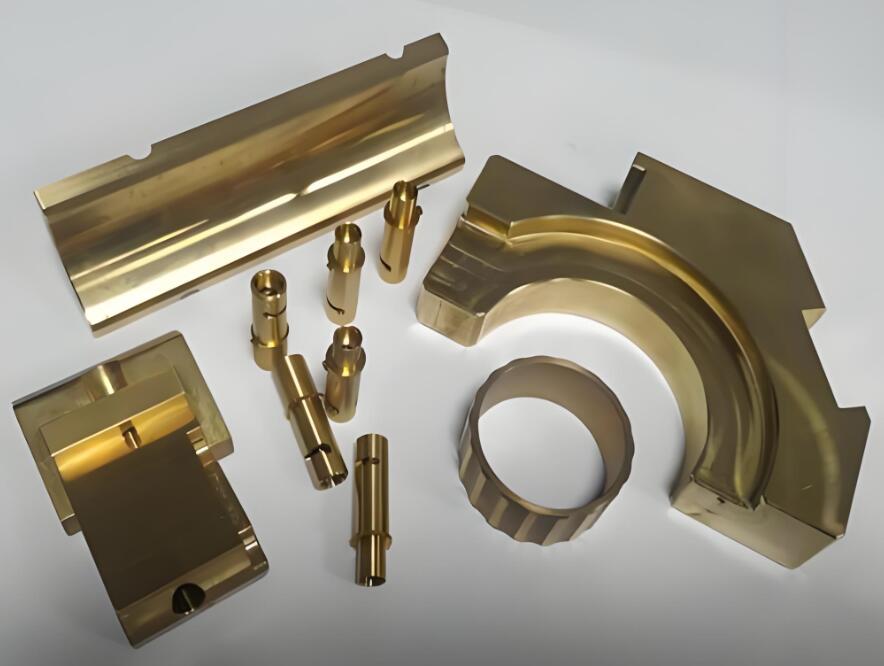Copper parts are widely used in the fields of electronics, electrical engineering, and construction due to their excellent conductivity, thermal conductivity, and corrosion resistance. However, copper materials are prone to oxidation, which can form a layer of copper oxide when exposed to air, affecting their performance and appearance. This article will detail the anti-oxidation treatment methods for copper parts, providing you with professional guidance and techniques to help extend their service life and maintain optimal performance.
1. Reasons and Impacts of Oxidation on Copper Parts
1.1 Reasons for Oxidation
Copper reacts with oxygen in the air to form copper oxide when exposed. Especially in humid environments and those containing sulfides, the rate of oxidation accelerates, easily forming verdigris (basic copper carbonate). These oxides can reduce the conductivity and thermal conductivity of copper materials, affecting their function.
1.2 Impacts of Oxidation
o • Decreased aesthetics: The oxide layer causes copper materials to lose their luster, affecting their appearance.
o • Performance degradation: The oxide layer affects the conductivity and thermal conductivity of copper, especially in the fields of electronics and electrical engineering.
o • Accelerated corrosion: The oxide layer is not entirely protective, and in some environments, it can exacerbate corrosion.
2. Anti-Oxidation Treatment Methods for Copper Parts
2.1 Chemical Coating
Chemical coating involves forming a protective film on the surface of copper parts through chemical reactions. Common chemical coatings include tin plating, nickel plating, and silver plating. These coatings not only improve antioxidant performance but also enhance the wear resistance and conductivity of the parts.
Operation steps:
1. Surface cleaning: Use acid cleaning or alkaline cleaning to remove surface oxides and oil stains.
2. Activation treatment: Use an acidic solution to activate the surface, promoting coating adhesion.
3. Chemical coating: Immerse the part in a chemical plating solution to form a coating through reaction.
4. Post-treatment: Wash with water and dry to ensure the coating is complete.
2.2 Electroplating Treatment
Electroplating treatment involves depositing a metal coating on the surface of copper parts through electrolysis, with common materials including zinc plating, nickel plating, and chrome plating. Electroplating provides a uniform, dense protective layer that effectively prevents oxidation.
Operation steps:
1. Surface preparation: Mechanical polishing or chemical cleaning to ensure the surface is free of dirt.
2. Electrolytic bath preparation: Prepare a suitable electrolytic bath.
3. Electroplating process: Immerse the part in the electrolytic bath to deposit the coating through electric current.
4. Post-treatment: Cleaning and passivation treatment to enhance the durability of the coating.
2.3 Coating Protection
Coating protection involves forming a protective coating on the surface of copper parts by spraying or dipping. Common materials include varnish, epoxy resin, and polyurethane. Coating protection can isolate air and moisture, preventing oxidation.
Operation steps:
1. Surface preparation: Grinding and cleaning to ensure a smooth surface without impurities.
2. Coating application: Apply the coating evenly using spraying or dipping methods.
3. Curing treatment: Natural drying or heat curing.
4. Inspection and repair: Check the uniformity and integrity of the coating.
2.4 Anodizing
Anodizing forms an oxide film on the surface of copper parts through electrochemical methods, featuring high hardness and corrosion resistance.
Operation steps:
1. Surface preparation: Chemical cleaning and acid washing.
2. Anodizing: Immerse the part in an electrolytic solution to generate an oxide film through electric current.
3. Post-treatment: Water washing and drying.
3. Precautions for Anti-Oxidation Treatment of Copper Parts
3.1 Material Selection
Choose appropriate anti-oxidation treatment methods and materials based on the usage environment and performance requirements, as different treatment methods are suitable for different scenarios.
3.2 Process Control
Strictly control process parameters such as temperature, time, and concentration to ensure stable and consistent treatment effects.
3.3 Environmental Protection
Properly handle waste liquid and gases produced during the process, choosing environmentally friendly treatment methods and materials.
Conclusion
The anti-oxidation treatment of copper parts is an important measure to extend their service life and maintain optimal performance. By selecting appropriate treatment methods such as chemical coating, electroplating, coating protection, and anodizing, combined with strict process control and environmental protection measures, the oxidation of copper materials can be effectively prevented, enhancing their value. It is hoped that this article will provide valuable references for practitioners and promote the development and application of anti-oxidation treatment technologies for copper parts.


